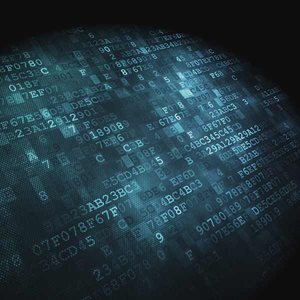24 April 2015
Taking discovery beyond data: Computer science explores new frontiers

Rajesh Gupta, chair of UC San Diego’s Computer Science and Engineering (CSE) Department
Computers shape our daily lives in a myriad of ways, some obvious, others not so.
Rajesh Gupta, chair of UC San Diego’s Computer Science and Engineering (CSE) Department, measures that immersion not merely by outwardly visible, hand-held devices — personal computers, smart phones, mobile devices — but computer-based innovations that go beyond our sight.
Take an example such as the pocket-sized device that instantaneously measures real-time fitness, health, and behavior patterns, no user training or arcane coding needed. Or the inner workings of the electric sports car, which Gupta describes as “a large, mobile iPad.” Or the device inserted within the body to monitor breathing, heart rate, and virtually everything else. Or the smart grid that gauges more efficient electricity consumption.
“Education access, healthcare, electricity, water, transportation, emergency response, communications infrastructure — all of these have been improved because of computing,” said Gupta. “These are not merely engineering issues — they are the issues of our everyday lives.”
Keys to unraveling the mysteries of the cosmos, the body, ancient history, the ocean’s depths — even detecting the exact location of Genghis Khan’s Inner Mongolia tomb — now loom closer to humankind’s grasp because of computer science.
“Much of the history of the human race is in each of us — we are the history book,” said Gupta. “You don’t have to dig into the ground to find that history anymore. Our DNA carries that information. Suddenly, we have the ability to navigate all those questions about who we are, what we are, and where we come from. We are the enablers.”
In the nearly five years since Gupta became department chair, the data science revolution has exploded.
“It’s no longer just data in and data out,” he said. “In our department, we don’t think of ourselves just as computer scientists or engineers who sit in backrooms and build these weird machines. We’re the microscope that sees inside ourselves for new insights.”
While he was growing up in his native India, computers were far from Gupta’s everyday life. His family’s modest home had limited electrical appliances — refrigerator, stove, ceiling fan, radio, but no television. Indeed, personal computers, as we know them today, had yet to be invented.
Gupta vividly recalls the first time he saw an actual computer. It was the late-1970s when he was a nineteen-year-old college student at the Indian Institute of Technology in the northern Indian city of Kanpur.
“It was very large and intimidating, about the size of a small car,” he said. “It had dancing lights, mesmerizing buttons, punch cards, and an air of mystery about what it actually did.”
To his surprise, the early-era computer was “surprisingly tame,” Gupta recalled. “I started playing around with it and that got my imagination running.”
 Later, concurrent with Apple’s launch of the Mac in 1984, Gupta came to the U.S. for graduate studies at UC Berkeley and later at Stanford University.
Later, concurrent with Apple’s launch of the Mac in 1984, Gupta came to the U.S. for graduate studies at UC Berkeley and later at Stanford University.
Before long Gupta assembled his own makeshift PC, reflecting a time when computer wizards designed, built, repaired, modified, and programmed computers, which left big-picture data analysis to others.
Such advanced skills are still required, but in contrast to most white-collar professions, the skill set is honed before knowledge is fully applied.
“In most other areas, you have a long hill of knowledge to climb before you learn practical skills,” he said. “You cannot do cardiac surgery without first going through an enormous amount of learning. Only then do you get to the skill. It’s the inverse in computing science.”
Since Gupta became chair of computer science and engineering in early 2011, total enrollment in the department has more than doubled to around 2,500, a rapid rise that until recently tested its capacity.
Two years ago, Gupta launched the “Inspiring Imaginations” campaign that resulted in donations, including the largest ever single alumni donation to the department to expand labs, programs, and classroom space. This has enabled the department to pursue an even more ambitious agenda of growth in the quality of learning experience by its students.
“We have high aspirations,” said Gupta. “Our faculty envisions this department at the very top regarding the quality of research we do, the students’ learning experience, and fulfilling the growing demand for our graduates.”
With an eye to that future, Gupta has launched Computing Primetime, a series of UCSD-TV programs devoted to the department’s leading professors, students, projects, and breakthroughs. The series also focuses on how computer scientists are engaging with faculty and students from other academic areas that benefit from interdisciplinary partnerships with CSE.
“For any emerging field like ours to thrive, we must continue to attract the best talent,” said Gupta, who hosted the inaugural episode, on cyber security. “To do that, we have to get our message out. When we capture the imagination of a young viewer, we have made a lifelong learner.”
To view the series, visit http://ucsd.tv/computing-primetime.